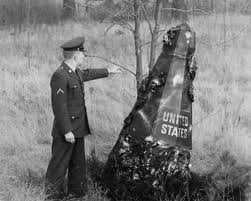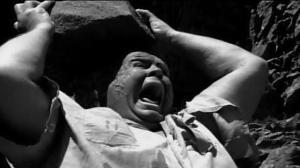Rating: 4/5
“When it comes to punk, New York has the hair, London has the trousers, but Belfast has the reason.”
Based on stories from Terri Hooley’s biography Hooleygan: Music, Mayhem, Good Vibrations, Good Vibrations wisely concentrates its attentions on the more uplifting aspects of the music fanatic-turned music store owner’s life. This rose-tinted approach is, however, a relief, and it manages to be possibly the only film I’ve seen set against the backdrop of the Troubles in Northern Ireland that I’ve enjoyed. Perhaps more surprisingly, it’s also the first I’ve seen that really offered a sense of what it was like living in Belfast during the particularly turbulent 1970s. The extent of the civil war, and the direct impact it had on those trying to simply get on with their lives, looms over the film throughout – its setting is crucial – but the tone is neither self-pitying nor exploitative. And, it’s not the violence that is foregrounded, but (and apologies if this sounds cheesy) the overwhelming ability of music to break down the social and political boundaries that plagued the country.
Punk fans may well be aware of Hooley who, despite the ongoing problems in Belfast, decides to open a music store. It’s a brave move at a time when everything is affected by the Troubles, and entrepreneurial spirit is virtually non-existent. As Hooley (Richard Dormer) reminisces, he once had friends, but the civil unrest was such that it turned everyone into one of two things: protestant or catholic. As someone who considered himself neither (he appears most influenced by his father’s socialist leanings), his inability, or unwillingness, to pick sides meant that he fit in nowhere. Despite this, Hooley’s enthusiasm and, so the film goes, the allure of music enables him to step back from the problems. His gift of vinyl to the two opposing sides comes with a proviso: to keep politics out of his record store. It seems to work, for the most part. Yet it’s only with the discovery of Northern Ireland’s underground punk movement that Hooley finds a group of friends for whom politics and religion don’t matter – they reject authority in general; in his words, they “don’t give a shit.” This attitude is refreshing, uplifting, enlightening, and Hooley becomes a man on a mission, determined to bring punk to the masses.
The impact of Hooley’s dedication should not be underestimated. Despite terrible business sense and a self-destructiveness (presented in the film more as boyish naivety than anything sinister), he is responsible for bringing The Undertones to the public sphere – the band that, according to the film, led legendary radio DJ John Peel to do something he’d never done before, and play the same song, Teenage Kicks, twice in a row. Hooley barely seems to know what he’s doing, but still manages to create a small record label, to get the kids into the studio, and even get them on the radio. All this despite the ongoing Troubles, and the achievement is perfectly revealed when he and the bands are stopped by British police at a road check point. Asking the bandmembers where they live in Belfast, the soldiers are astonished to discover they’re from all over the city (this being a time when simply your geographical location immediately implied your political and/or religious leanings). “You’re saying some of these boys are catholic and some are protestant?” the soldier asks incredulously. “I never thought to ask,” replies Hooley. For him and the other punks, it’s the shared love of music that matters – they are not one denomination or the other, they are music fans first and foremost.
Good Vibrations is deliberately uplifting, but it’s best to go with it, rather than sour the experience with rationalism. The punk bands are all lovely individuals – one of the funniest scenes involves a store-full of them carefully stuffing vinyl records like a mohawk-clad, safety-pin-adorned team of Santa’s elves. Dormer is excellent as Hooley, bringing a real energy and likeability to the character. In truth, he was probably a difficult person to live with, but this is only touched upon, with his wife Ruth (Jodie Whittaker) largely remaining loyal and supportive. His alcoholism is implied, but it’s all presented with a good-natured tone, with the film clearly preferring to focus on the good. With the main action keeping a fairly tight focus – this is a biography, after all – the troubles are relayed through genuine footage interspersed throughout the narrative. This brings a realism to the film, serving as a more sober reminder of the conditions under which Hooley was working. Yet this is the backdrop, and Hooley remains front and centre. In many ways the film adopts a very formulaic structure, relating the most successful portion of his life, culminating in a big spectacle, a moment of triumph. What happens afterwards is consigned to a few intertitles at the end, though anyone interested can read the biography. Yet it’s appropriate that Good Vibrations should focus on a small part of Hooley’s life, considering how brief the punk movement in general really was, and although the Troubles continued long after the narrative here stops (and even continues today), we’re asked to look back fondly at the small but significant impact one man made.





